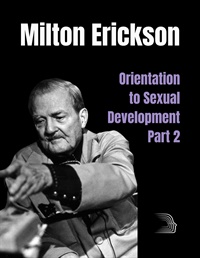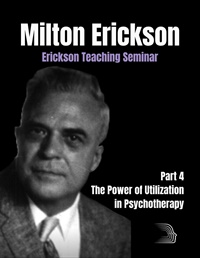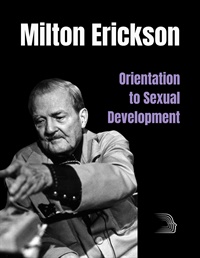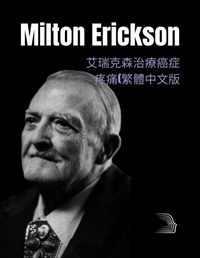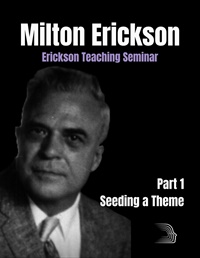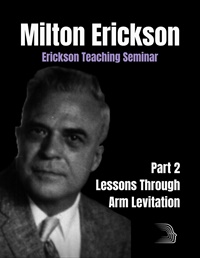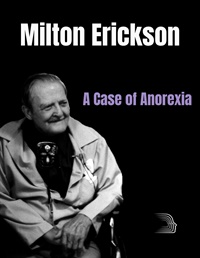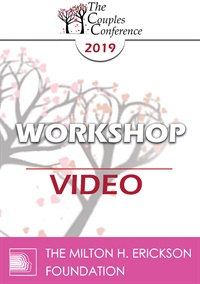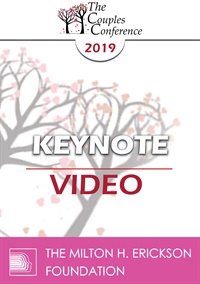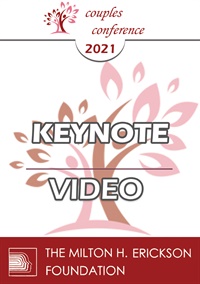
Credit available - Click Here for more information
- Average Rating:
- Not yet rated
- Topic Areas:
- Couples Therapy | Sex and Sexuality | Intimacy | Keynotes
- Categories:
- Couples Conference | Couples Conference 2021 | Online Continuing Education
- Faculty:
- Martha Kauppi, MS MFT
- Course Levels:
- Master Degree or Higher in Health-Related Field
- Duration:
- 1 Hour 3 Minutes
- Format:
- Audio and Video
- Original Program Date:
- Jun 06, 2021
- Short Description:
- Desire resides at the intersection of multiple systems, encompassing purely sexual aspects, numerous physiologic components, and a vast web of emotional, spiritual, and relational issues. In this skills-based presentation, Martha shares her approach to understanding complicated interconnected presenting symptoms, relational dynamics, and conceptualizing and treating issues related to desire.
- Price:
- $29.00 - Base Price
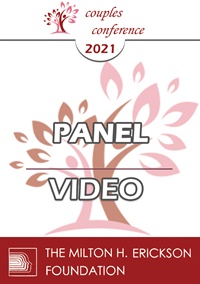
Credit available - Click Here for more information
- Average Rating:
- Not yet rated
- Topic Areas:
- Couples Therapy | Therapist Development | Topical Panels | Crisis Therapy
- Categories:
- Couples Conference | Couples Conference 2021 | Online Continuing Education | Pioneers in Couples and Family Therapy
- Faculty:
- Stan Tatkin, PsyD, MFT | William Doherty, PhD | Ellyn Bader, PhD
- Course Levels:
- Master Degree or Higher in Health-Related Field
- Duration:
- 1:00:44
- Format:
- Audio and Video
- Original Program Date:
- Jun 06, 2021
- Short Description:
- The panel examines the intricate dynamics between individual and couples therapy, revealing potential pitfalls in therapeutic approaches. Experts discuss how individual therapists can unintentionally harm relationships, with research showing many diagnose unseen partners and suggest relationships are irreparable. The discussion emphasizes collaboration, systemic understanding, and the importance of communication between therapists to support couples effectively.
- Price:
- $29.00 - Base Price
Tags: Online CE Couples Therapy Therapist Development Ethics Therapeutic Process Client Trust Crisis Intervention Team-Based Therapy Identity Development Relationship Dynamics Systemic Perspective Projection Developmental Capacities Boundary Violations Trauma Reenactment Differentiation Differentiation of Self Domestic Violence Therapeutic Alliance Co-Therapy Client Confidentiality
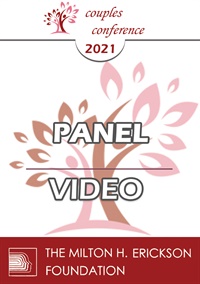
Credit available - Click Here for more information
- Average Rating:
- Not yet rated
- Topic Areas:
- Couples Therapy | Relationships | Continuing Education | Mindfulness | Topical Panels | Treatment Planning | IMAGO | Psychobiological Approach to Couples Therapy (PACT) | Family Systems
- Categories:
- Couples Conference | Couples Conference 2021 | Online Continuing Education | Pioneers in Couples and Family Therapy
- Faculty:
- Helen LaKelly Hunt, PhD | Caroline S. Welch | Stan Tatkin, PsyD, MFT | Shawn Giammattei, PhD
- Course Levels:
- Master Degree or Higher in Health-Related Field
- Duration:
- 58 Minutes
- Format:
- Audio and Video
- Original Program Date:
- Jun 06, 2021
- Short Description:
- This panel addresses managing reactivity in relationships, focusing on a neurodivergent, neurotypical, trans gay couple. Topics include touch sensitivity, parenting conflicts, and emotional regulation. Highlights include the use of narrative therapy, positive Intelligence, dialog practices, and brain-based techniques to strengthen empathy and resilience. Emphasis is placed on mindfulness, direct intervention, and supporting relationship dynamics shaped by neurodiversity.
- Price:
- $29.00 - Base Price
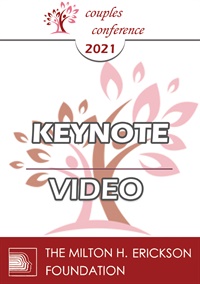
Credit available - Click Here for more information
- Average Rating:
- Not yet rated
- Topic Areas:
- Couples Therapy | Sex and Sexuality | Continuing Education | LGBTQ | Gender | Keynotes | Relationships
- Categories:
- Couples Conference | Couples Conference 2021 | Online Continuing Education
- Faculty:
- Joseph Winn, MSW, LICSW, CST-S
- Course Levels:
- Master Degree or Higher in Health-Related Field
- Duration:
- 1 Hour 2 Minutes
- Format:
- Audio and Video
- Original Program Date:
- Jun 06, 2021
- Short Description:
- This keynote will highlight core themes that are imperative for therapists to consider before working with relational systems that exist beyond the purview of heteronormativity. Specific topics will include becoming aware of ones sexological world views, understanding and working with sexual and relational health, and exploring what variant sexual, erotic and relational systems may offer heteronormative and monogamous couples in terms of increasing vulnerability, differentiation, and deepening relational attunement.
- Price:
- $29.00 - Base Price

Credit available - Click Here for more information
- Average Rating:
- Not yet rated
- Topic Areas:
- Couples Therapy | IMAGO | Communication | Keynotes | Relationships | Therapist Development
- Categories:
- Couples Conference | Couples Conference 2021 | Online Continuing Education | Pioneers in Couples and Family Therapy
- Faculty:
- Harville Hendrix, PhD | Helen LaKelly Hunt, PhD
- Course Levels:
- Master Degree or Higher in Health-Related Field
- Duration:
- 1 hour
- Format:
- Audio and Video
- Original Program Date:
- Jun 06, 2021
- Short Description:
- This keynote introduces Imago Relationship Therapy, emphasizing safe conversations and the shift to a relational paradigm. Key practices include structured dialogues—such as mirroring, validating, and empathic responses—to strengthen connection and address early childhood influences. The approach focuses on the “space between” partners, aiming to build conscious partnerships, improve relational skills, and support brain health through evidence-based methods.
- Price:
- $29.00 - Base Price
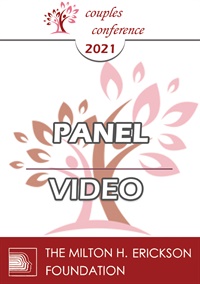
Credit available - Click Here for more information
- Average Rating:
- Not yet rated
- Topic Areas:
- Couples Therapy | Infidelity | Gender | Topical Panels | Attachment | Family Systems | Psychodynamics
- Categories:
- Couples Conference | Couples Conference 2021 | Online Continuing Education | Pioneers in Couples and Family Therapy
- Faculty:
- Ellyn Bader, PhD | Martha Kauppi, MS MFT | Joseph Winn, MSW, LICSW, CST-S
- Course Levels:
- Master Degree or Higher in Health-Related Field
- Duration:
- 1 Hour 3 Minutes
- Format:
- Audio and Video
- Original Program Date:
- Jun 06, 2021
- Short Description:
- This panel examines the complex dynamics of infidelity and jealousy, offering insights into therapeutic approaches that help couples navigate trust violations, emotional wounds, and relationship repair. The discussion focuses on understanding underlying psychological patterns, fostering differentiation, and creating pathways for healing and personal growth.
- Price:
- $29.00 - Base Price
Tags: Online CE Couples Therapy Gender Infidelity Attachment Injury Psychodynamic Model Session Techniques Family Psychology Emotional Reflection Differentiation Emotional Regulation Jealousy Relationship Repair Therapist Challenges Betrayal Trust Issues Relational Growth Therapy Process Intergenerational Transmission Affective Rumination

Credit available - Click Here for more information
- Average Rating:
- Not yet rated
- Topic Areas:
- Couples Therapy | LGBTQ | Continuing Education | Keynotes | Gender
- Categories:
- Couples Conference | Couples Conference 2021 | Online Continuing Education
- Faculty:
- Shawn Giammattei, PhD
- Course Levels:
- Master Degree or Higher in Health-Related Field
- Duration:
- 1 Hour 9 Minutes
- Format:
- Audio and Video
- Original Program Date:
- Jun 06, 2021
- Short Description:
- Dr. Giammattei will present the underlying framework that therapists who work with transgender or gender expansive (TGE) couples need to understand in order to provide gender affirming treatment. He will share ways to explore your own hetero/cis-normative beliefs around coupling and how these influence the models you choose, the questions you ask, and the interventions you use. While TGE couples experience many of the same issues as other couples, we will explore the minority stress and unique stressors that impact these issues in profound ways.
- Price:
- $29.00 - Base Price
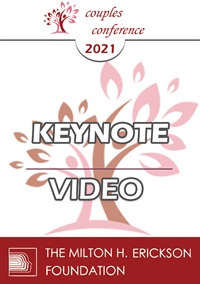
Credit available - Click Here for more information
- Average Rating:
- Not yet rated
- Topic Areas:
- Couples Therapy | Communication | Conflict | Keynotes | Relationships | Social Issues | Training
- Categories:
- Couples Conference | Couples Conference 2021 | Online Continuing Education | Pioneers in Couples and Family Therapy
- Faculty:
- Ellyn Bader, PhD
- Course Levels:
- Master Degree or Higher in Health-Related Field
- Duration:
- 1 Hour
- Format:
- Audio and Video
- Original Program Date:
- Jun 05, 2021
- Short Description:
- Increasingly more and more couples are working together or working virtually in the same space. It is estimated that in the United States 43% of small businesses are family-run and 53% of managers share day-to-day management with a spouse. Working together tends to eclipse romance and dominate a couples life. As therapists, we tend to look at our couples/clients mainly through the lens of our favorite therapy model. However, couples who work together face unique challenges that are not rooted in attachment styles or family of origin conflicts.
- Price:
- $29.00 - Base Price
Tags: Online CE Communication Conflict Couples Therapy Relationships Relationship Challenges Training Social Effects Training Center Partnership Interpersonal Success Therapeutic Applications Business Partnership Commitment Developmental Model Work-Life Balance Negotiation Psychoeducational Approach Financial Stress Pandemic Impact Couples Institute Roles and Responsibilities Acknowledgement and Appreciation Decision Making
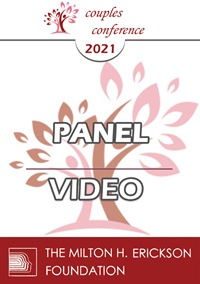
Credit available - Click Here for more information
- Average Rating:
- Not yet rated
- Topic Areas:
- Couples Therapy | LGBTQ | Sex and Sexuality | Topical Panels | Gender
- Categories:
- Couples Conference | Couples Conference 2021 | Online Continuing Education | Pioneers in Couples and Family Therapy
- Faculty:
- Stan Tatkin, PsyD, MFT | Martha Kauppi, MS MFT | Shawn Giammattei, PhD
- Course Levels:
- Master Degree or Higher in Health-Related Field
- Duration:
- 1 Hour 1 Minutes
- Format:
- Audio and Video
- Original Program Date:
- Jun 05, 2021
- Short Description:
- This panel explores the challenges and opportunities of addressing sexuality in online therapy. Panelists share strategies for fostering intimacy, reading somatic cues, and engaging diverse couples—particularly LGBTQ and trans clients. Emphasis is placed on therapist presence, adaptability, and creativity in navigating privacy, body image, and post-COVID relational shifts.
- Price:
- $29.00 - Base Price
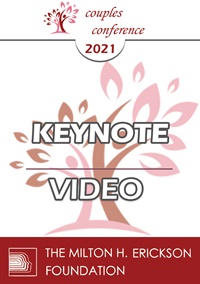
Credit available - Click Here for more information
- Average Rating:
- Not yet rated
- Topic Areas:
- Social Issues | Intimacy | Conflict | Couples Therapy | Keynotes | Cultural and Social Contexts | Empathy
- Categories:
- Couples Conference | Couples Conference 2021 | Online Continuing Education | Pioneers in Couples and Family Therapy
- Faculty:
- William Doherty, PhD
- Course Levels:
- Master Degree or Higher in Health-Related Field
- Duration:
- 1 Hour
- Format:
- Audio and Video
- Original Program Date:
- Jun 05, 2021
- Short Description:
- We live in the most polarized era since the 1850s. The presenter will describe the connection between escalating couple conflict and escalating political polarization. He will propose ways that therapists can work with politically divided couples, and he will describe his work since 2016 on “red/blue” polarization in the U.S. via the national nonprofit Braver Angels. He will argue that couples therapists have much to offer a nation in trouble.
- Price:
- $29.00 - Base Price
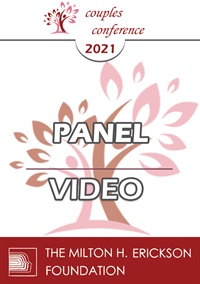
Credit available - Click Here for more information
- Average Rating:
- Not yet rated
- Topic Areas:
- Couples Therapy | Gender | Masculinity | Topical Panels | LGBTQ
- Categories:
- Couples Conference | Couples Conference 2021 | Online Continuing Education | Pioneers in Couples and Family Therapy
- Faculty:
- Harville Hendrix, PhD | Terry Real, LICSW | Joseph Winn, MSW, LICSW, CST-S
- Course Levels:
- Master Degree or Higher in Health-Related Field
- Duration:
- 59 Minutes
- Format:
- Audio and Video
- Original Program Date:
- Jun 05, 2021
- Short Description:
- The panel examines shifting male roles in therapy and relationships, focusing on the move from traditional masculinity toward vulnerability, empathy, and equality. Speakers discuss the decline in male resistance to therapy, the importance of dismantling patriarchal norms, and the impact of race, class, and sexuality on masculine identity. Emphasis is placed on therapist self-awareness and promoting relational skills over rigid gender roles.
- Price:
- $29.00 - Base Price
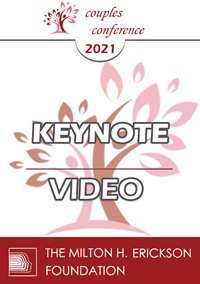
Credit available - Click Here for more information
- Average Rating:
- Not yet rated
- Topic Areas:
- Couples Therapy | Love | Continuing Education | Goals of the Therapist | Keynotes | Relationships | Attachment | Developmental Psychology | Stress
- Categories:
- Couples Conference | Couples Conference 2021 | Online Continuing Education | Pioneers in Couples and Family Therapy
- Faculty:
- Stan Tatkin, PsyD, MFT
- Course Levels:
- Master Degree or Higher in Health-Related Field
- Duration:
- 1 Hour 2 Minutes
- Format:
- Audio and Video
- Original Program Date:
- Jun 05, 2021
- Short Description:
- An exploration of how principle-based relationships—grounded in shared purpose, vision, and governance—can anchor couples amid stress, miscommunication, and human fallibility. Emphasizing co-regulation and mutual accountability, the session highlights how therapists can guide partners toward secure functioning while attending to broader ethical, social, and psychological dimensions of relational life.
- Price:
- $29.00 - Base Price
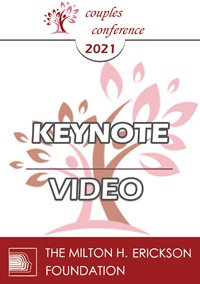
Credit available - Click Here for more information
- Average Rating:
- Not yet rated
- Topic Areas:
- Couples Therapy | Mindfulness | Keynotes | Conflict | Relationships
- Categories:
- Couples Conference | Couples Conference 2021 | Online Continuing Education | Pioneers in Couples and Family Therapy
- Faculty:
- Ellyn Bader, PhD | Caroline S. Welch
- Course Levels:
- Master Degree or Higher in Health-Related Field
- Duration:
- 58 Minutes
- Format:
- Audio and Video
- Original Program Date:
- Jun 05, 2021
- Short Description:
- Exploration of how mindfulness can provide an accessible, useful tool in couples therapy, not only for the therapist, the two individuals, and their relationship, but also for the therapeutic process. Mindfulness can be practically applied through Caroline Welch’s 3Ps approach of Purpose, Pivoting, and Pacing to cultivate more resilience which is important to cultivate in couples therapy.
- Price:
- $29.00 - Base Price
Tags: Online CE Conflict Couples Therapy Mindfulness Relationships Coping Strategies Existential Psychology Therapeutic Adaptation Client Engagement Therapeutic Adjustments Meditation, Spirituality and Yoga Self-Care Self-Compassion Emotional Field Relationship Change Flexibility Stress Management Purpose Informal Practice Presence Pivoting
Credit available - Click Here for more information
- Average Rating:
- Not yet rated
- Topic Areas:
- Milton Erickson | Sex and Sexuality | Ericksonian Hypnosis and Therapy Techniques | Experiential Therapy | Storytelling | Strategic Therapy | Hypnosis
- Categories:
- Erickson Materials | Erickson Streaming Video Collection | Milton H. Erickson Collections | Online Continuing Education
- Faculty:
- Jeffrey Zeig, PhD | Milton H. Erickson, MD
- Course Levels:
- Master Degree or Higher in Health-Related Field
- Duration:
- 1 Hour 8 Minutes
- Format:
- Audio and Video
- Original Program Date:
- Sep 24, 2020
- Short Description:
- In Part 2 of Dr. Erickson’s Orientation to Sexual Development, Milton Erickson continues his interesting lecture about the natural developmental processes involved with sexual/relational maturity. This video begins with Erickson telling charming stories of his sons sexually and relationally developing, which illustrate the principles outlined in the video.
- Price:
- $19.95 - Base Price
Credit available - Click Here for more information
- Average Rating:
- Not yet rated
- Topic Areas:
- Milton Erickson | Utilization | Ericksonian Hypnosis and Therapy Techniques | Ericksonian Psychotherapy | Psychotherapy | Hypnosis
- Categories:
- Erickson Materials | Erickson Streaming Video Collection | Milton H. Erickson Collections | Online Continuing Education
- Faculty:
- Jeffrey Zeig, PhD | Milton H. Erickson, MD
- Course Levels:
- Master Degree or Higher in Health-Related Field
- Duration:
- 1 hour
- Format:
- Audio and Video
- Original Program Date:
- Jul 22, 2020
- Short Description:
- Join Milton Erickson at his teaching seminar in the late 1970s. You will encounter his innovative teaching methods prompting students to activate their utilization skills. Learn Erickson's process for creating memorable interventions with clients overly concerned about body image. Encounter his method of using nonverbal methods to evoke adaptive responses. Introduction and annotations by Jeff Zeig, Erickson Foundation Director.
- Price:
- $29.95 - Base Price
Credit available - Click Here for more information
- Average Rating:
- Not yet rated
- Topic Areas:
- Sex and Sexuality | Couples Therapy | Ericksonian Hypnosis and Therapy Techniques | Milton Erickson | Children and Adolescent Therapy | Humor | Hypnosis
- Categories:
- Erickson Materials | Erickson Streaming Video Collection | Milton H. Erickson Collections | Online Continuing Education
- Faculty:
- Jeffrey Zeig, PhD | Milton H. Erickson, MD
- Course Levels:
- Master Degree or Higher in Health-Related Field
- Duration:
- 1 hour
- Format:
- Audio and Video
- Original Program Date:
- Jul 07, 2020
- Short Description:
- In this video, Dr. Milton Erickson describes sexual development — from infancy to adulthood, with a focus on male sexual maturation. As Erickson’s describes sexual development, the viewer feels as if they are going through the process as well. Erickson also includes humorous anecdotes of his children as they grew into adults. At the end of the video Dr. Jeffrey Zeig comments on Erickson’s fascinating teaching methods and communication techniques.
- Price:
- $19.95 - Base Price
Credit available - Click Here for more information
- Average Rating:
- Not yet rated
- Topic Areas:
- Pain and Healing | Milton Erickson | Ericksonian Hypnosis and Therapy Techniques | Hypnosis | Strategic Therapy | Utilization | Cancer
- Categories:
- Erickson Materials | Erickson Streaming Video Collection | Milton H. Erickson Collections | Online Continuing Education
- Faculty:
- Milton H. Erickson, MD | Jeffrey Zeig, PhD
- Course Levels:
- Master Degree or Higher in Health-Related Field
- Duration:
- 1 hour
- Format:
- Audio and Video
- Original Program Date:
- May 07, 2020
- Short Description:
- This video features three separate cases, but all demonstrate Erickson’s fundamental method of utilization. Utilization is the foundation of solutions to all problems, and it is a philosophy of living which was central Erickson’s life and work as a therapist. He demonstrated that whatever existed in the situation, whatever the patient presented, could be utilized to advance the therapy.
- Price:
- $29.95 - Base Price
Credit available - Click Here for more information
- Average Rating:
- Not yet rated
- Topic Areas:
- Seeding | Destabilization | Dissociation | Ericksonian Hypnosis and Therapy Techniques | Milton Erickson | Hypnosis
- Categories:
- Erickson Materials | Erickson Streaming Video Collection | Milton H. Erickson Collections | Online Continuing Education
- Faculty:
- Milton H. Erickson, MD | Jeffrey Zeig, PhD
- Course Levels:
- Master Degree or Higher in Health-Related Field
- Duration:
- 1 hour
- Format:
- Audio and Video
- Original Program Date:
- May 07, 2020
- Short Description:
- In part one of Seeding a Theme - A Teaching Seminar with Milton Erickson, you will witness Erickson seamlessly planting a seed, connecting the dots, developing a theme, and closing the loop in one class period. You will learn how Erickson conducted dissociation through the tempo, content and tone of his words.
- Price:
- $29.95 - Base Price
Credit available - Click Here for more information
- Average Rating:
- Not yet rated
- Topic Areas:
- Ericksonian Hypnosis and Therapy Techniques | Hypnosis | Milton Erickson | Trance | Utilization | Arm Levitation | Hypnotic Phenomena
- Categories:
- Erickson Materials | Erickson Streaming Video Collection | Milton H. Erickson Collections | Online Continuing Education
- Faculty:
- Milton H. Erickson, MD | Jeffrey Zeig, PhD
- Course Levels:
- Master Degree or Higher in Health-Related Field
- Duration:
- 1 hour
- Format:
- Audio and Video
- Original Program Date:
- May 07, 2020
- Short Description:
- In part two of a Teaching seminar with Milton Erickson, you will witness how Erickson carefully observed and utilized a student’s non-verbal behaviors to developing a trance experience using arm levitation while simultaneously interacting to teach other students. You will see how Dr. Erickson strategically used hypnotic phenomena.
- Price:
- $29.95 - Base Price
Credit available - Click Here for more information
- Average Rating:
- Not yet rated
- Topic Areas:
- Anorexia | Eating Disorders | Milton Erickson | Ericksonian Hypnosis and Therapy Techniques | Utilization | Hypnosis
- Categories:
- Erickson Materials | Erickson Streaming Video Collection | Milton H. Erickson Collections | Online Continuing Education
- Faculty:
- Milton H. Erickson, MD | Jeffrey Zeig, PhD
- Course Levels:
- Master Degree or Higher in Health-Related Field
- Duration:
- 1 hour
- Format:
- Audio and Video
- Original Program Date:
- Apr 27, 2020
- Short Description:
- In this video, you will see Erickson’s unusual way of treating anorexia. Erickson described himself as a person who has an iron fist, but a velvet glove. He knew when it was right to be firm, to be disciplined, and even to be assertive in work with a client. Dr. Jeffrey Zeig provides insightful commentary on this historic Erickson clip.
- Price:
- $29.95 - Base Price
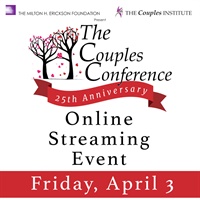
Credit available - Click Here for more information
- Average Rating:
- 28
- Topic Areas:
- Couples Therapy | Conflict | Developmental Therapy Model | IMAGO | Infidelity | LGBTQ | Relational Life Therapy Model (RLT) | Relationships | Sex and Sexuality
- Categories:
- Couples Conference | Couples Conference 2020 | Online Continuing Education
- Faculty:
- Ellyn Bader, PhD | Joseph Winn, MSW, LICSW, CST-S | Terry Real, LICSW | Harville Hendrix, PhD | Helen LaKelly Hunt, PhD | Martha Kauppi, MS MFT | Stan Tatkin, PsyD, MFT | William Doherty, PhD | ....
- Course Levels:
- Master Degree or Higher in Health-Related Field
- Duration:
- 4 Hours
- Format:
- Audio and Video
- Original Program Date:
- Apr 03, 2020
- Short Description:
- A streaming option in place of the Couples Conference 2020 4 hour event. This recording provides a comprehensive cross-section of a variety of approaches to couples therapy, including specific therapeutic models, discussions on sexual desire discrepancies, working with resistance in the therapy room and more.
- Price:
- $29.00 - Base Price
CC19 Workshop 13 - Working with Escalated Couples: Coming Home from Hell with EFT - Sue Johnson, EdD
Credit available - Click Here for more information
- Average Rating:
- Not yet rated
- Topic Areas:
- Workshops | Attachment | Couples Therapy | Emotionally Focused Therapy (EFT)
- Bundle(s):
- CC19 Main Conference Video Bundle | CC19 Individual Selections
- Categories:
- Couples Conference | Couples Conference 2019 | Online Continuing Education
- Faculty:
- Sue Johnson, EdD
- Course Levels:
- Master Degree or Higher in Health-Related Field
- Duration:
- 2:22:13
- Format:
- Audio and Video
- Original Program Date:
- Apr 14, 2019
- Short Description:
- This workshop will outline the EFT Way through conflict and disconnection, pain and mayhem that is a couple at war with each other. Specific interventions such as Catch the Bullet will be outlined. In the second half of the workshop, the process of attachment injury healing will also be addressed.
- Price:
-
Sale is $29.00
price reduced from Base Price - $59.00
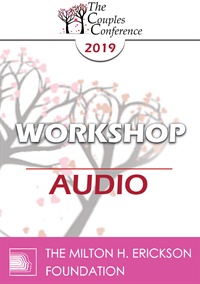
Credit available - Click Here for more information
- Average Rating:
- Not yet rated
- Topic Areas:
- Workshops | Psychobiological Approach to Couples Therapy (PACT) | Personality Disorders | Continuing Education | Couples Therapy | Attachment
- Bundle(s):
- CC19 Main Conference Audio Bundle | CC19 Individual Selections
- Categories:
- Couples Conference | Couples Conference 2019 | Online Continuing Education | Pioneers in Couples and Family Therapy
- Faculty:
- Stan Tatkin, PsyD, MFT
- Duration:
- 3:06:45
- Format:
- Audio Only
- Original Program Date:
- Apr 14, 2019
- Short Description:
- This advanced PACT workshop explores how to work effectively with personality-disordered partners, distinguishing structural deficits from insecure attachment. Drawing from object relations and ego psychology, it examines disorders like borderline and narcissistic personality, emphasizing projective identification, betrayal, and power dynamics. Techniques focus on fostering secure functioning while navigating trauma, trust ruptures, and cultural influences within couple systems.
- Price:
- $15.00 - Base Price
Credit available - Click Here for more information
- Average Rating:
- Not yet rated
- Topic Areas:
- Keynotes | Neuroscience | Attachment | Couples Therapy | Relationships | Polyvagal Theory
- Bundle(s):
- CC19 Main Conference Video Bundle | CC19 Individual Selections
- Categories:
- Couples Conference | Couples Conference 2019 | Online Continuing Education | Pioneers in Couples and Family Therapy
- Faculty:
- Stan Tatkin, PsyD, MFT
- Course Levels:
- Master Degree or Higher in Health-Related Field
- Duration:
- 59:40
- Format:
- Audio and Video
- Original Program Date:
- Apr 14, 2019
- Short Description:
- This keynote explores the neurobiology of relational ethics, asking why partners sometimes act against their own or each other’s best interest. Tatkin examines how brain systems governing threat, stress, and reward influence moral behavior, and urges therapists to help couples co-create principles like fairness, transparency, and mutual care—shifting from reactive habits to secure, value-driven relating.
- Price:
-
Sale is $29.00
price reduced from Base Price - $59.00
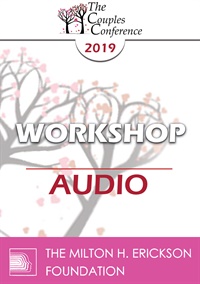
Credit available - Click Here for more information
- Average Rating:
- Not yet rated
- Topic Areas:
- Workshops | Couples Therapy | Relational Life Therapy Model (RLT) | Relationships | Identity | Masculinity
- Bundle(s):
- CC19 Main Conference Audio Bundle | CC19 Individual Selections
- Categories:
- Couples Conference | Couples Conference 2019 | Online Continuing Education | Pioneers in Couples and Family Therapy
- Faculty:
- Terry Real, LICSW
- Duration:
- 1:10:29
- Format:
- Audio Only
- Original Program Date:
- Apr 14, 2019
- Short Description:
- This workshop covers phase two of Relational Life Therapy, focusing on Family of Origin and Inner Child Work. It examines how childhood experiences shape each partner’s relational stance and the couple’s dynamic. Key tools include the Relationship Grid, which maps boundaries and self-esteem across four quadrants. The session addresses the impact of patriarchy, grandiosity, and shame, and offers strategies for building healthy self-esteem, managing contempt, and restoring relational balance.
- Price:
- $15.00 - Base Price


